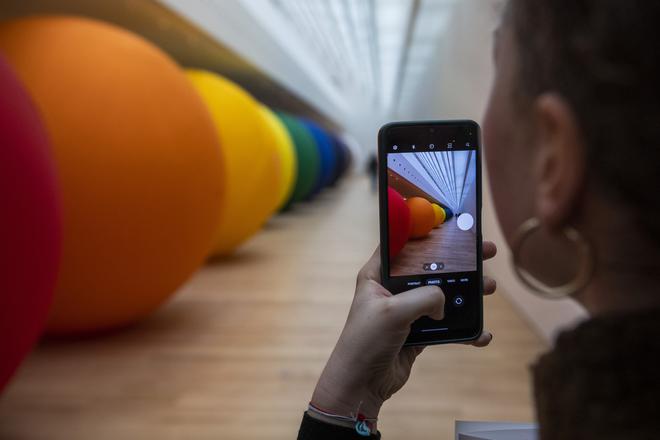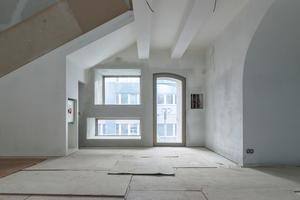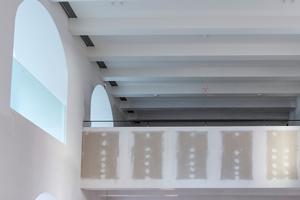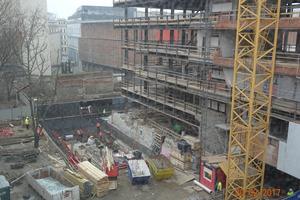“It’s good that they didn’t demolish it,” said visitor Pavol Vranko as he admired 12 large, colourful, air-filled balls exhibited in the refurbished Premostenie, or Bridge, of the Slovak National Gallery (SNG) in Bratislava. “After seeing it from the inside, so nicely refurbished, I’ve finally acknowledged its qualities.”
The Bridge, an extension to the SNG dating from the 1970s that for some carries the stigma of “socialistic” architecture, has provoked conflicting emotions since its conception. Some architecture experts have praised it as an excellent example of modern, functionalist architecture, while others, including many among the lay public, condemned it for damaging the harmony of the gallery’s historical setting, a 19th-century Neo-Renaissance palace and earlier Austro-Hungarian military barracks. Now, it not only provides generous exhibition space, but also demonstrates that modern architecture dating from the previous totalitarian regime can be properly restored.
“We hope that when it starts to be used well, people will love it,” Alexandra Kusá, general director of the SNG, said in an interview with the Sme daily.
Reconstruction of the Bridge is only part of the extensive refurbishment of the SNG’s premises on the Danube embankment in the Slovak capital. It has taken seven years and cost more than €75 million. The sum represents the biggest investment in a public building in the history of Slovakia.
“This is a unique achievement that brings with it huge benefits, not only for the art community, but for all visitors and supporters of the visual arts,” commented Culture Minister Natália Milanová.
Old and new
The SNG’s premises are an amalgamation of historical buildings: the Vodné kasárne (Water Barracks), the Esterházy Palace, and the supplementary modern architecture. Its core is the originally four-wing baroque Water Barracks from the 18th century. The front wing was pulled down in the 1940s during construction of a four-lane road along the Danube embankment. Thus, when a proposal to extend the gallery emerged in the 1950s, part of the project was to connect the western and eastern wings of the Water Barracks with a new construction. Architect Vladimír Dedeček designed it as a sculpture-like, monumental elevated three-floor bridge providing a view over the Baroque façade of the northern wing of the barracks.
Kusá ascribes the negative response to the Bridge to its radical intervention into the aesthetics of the embankment, where she says people are still “craving Golden Lanes” – a reference to a famous historical street in Prague. The second reason is that its author, architect Vladimír Dedeček, for unclear reasons, came to symbolise the communist regime. Finally, the Bridge was painted red, the colour of the communist regime, which also raised hackles.
“However, this was quite unfair,” said Kusá. “His work was bold.”





